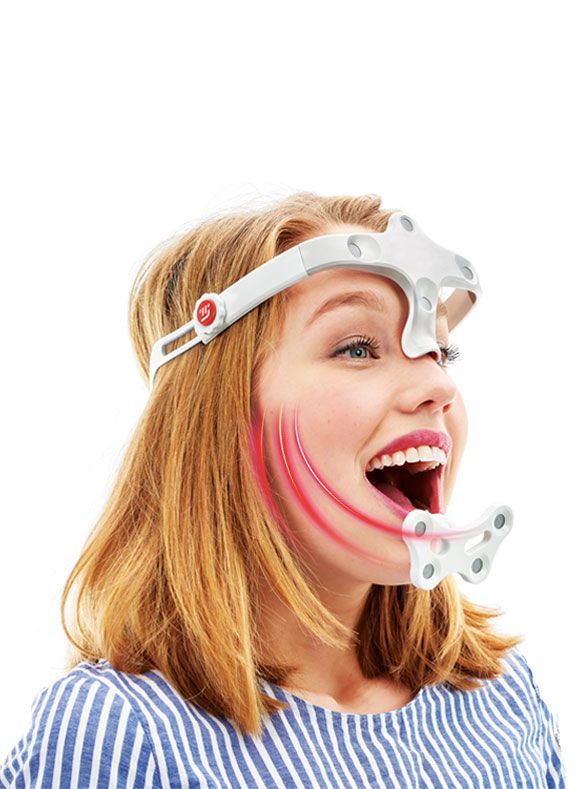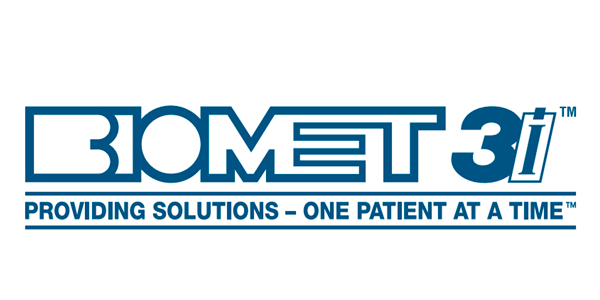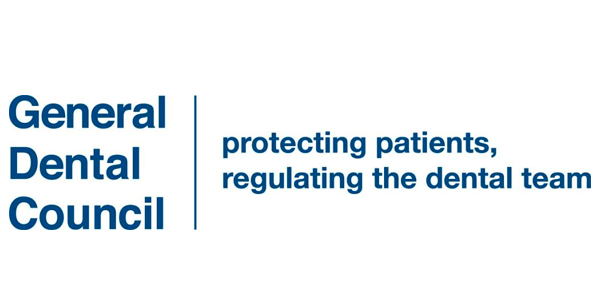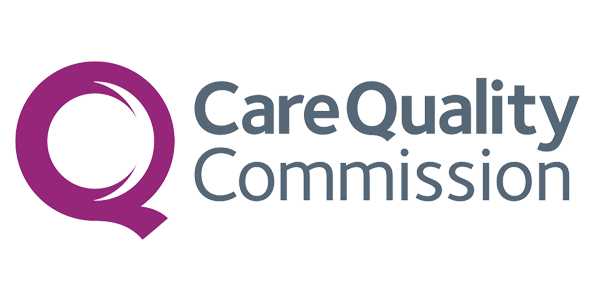
Suffering pain and discomfort from TMD?
Regain control with MODJAW
4D dentistry for a more complete approach to diagnostics
Effective treatment to produce unrivalled results
Get in touch today
Book your free consultation now 0191 259 6506

What is TMD?
Temporomandibular disorder, more commonly referred to as TMD, is a common cause of pain and discomfort in the jaw.
TMD acts by impacting the temporomandibular joint, or TMJ. The TMJ connects your jawbone to your skull, working a bit like a sliding hinge. You have one joint on each side of your jaw, and TMD can impact either side, or even both.
Here at Ewan Bramley Dental Care we’ve brought in the latest technology to help diagnose problems such as TMD quickly and effectively. The solution? MODJAW.
How does the MODJAW work?
MODJAW offers a live scan of your mouth. It provides a simple and fast digital response, capturing the motions of your jaw, then applying them to 3D models from a lab scanner or directly from an intraoral scanner. Within minutes, this provides access to real time 4D models of your mouth to give a clear indication of your overall oral health.
The MODJAW also has the ability to record. This means that our dental experts can record your jaw motion, providing an innovative approach to treatment. This new perspective makes it easy to identify any issues and uncover the reasons behind any discomfort or pain you might be experiencing.
Not only can the MODJAW record your jaw motion, but it can also replay it. The unique software we use is designed with an ergonomic interface and touch-screen diagnostic functionalities, allowing for dynamic visuals of models that can be both 2D and 4D. This allows a dental expert to assess your mouth from every angle, leaving nothing to chance.
MODJAW can even assess the hinge axis of your temporomandibular joints and give a clear impression of the health of these areas.
MODJAW can be used to take 3D photographs of your mouth, which can in turn be shared between a team of dental experts in order to determine the best course of action for improving your symptoms.
The trouble with diagnosing TMD
It can be difficult to determine exactly what is the central cause of a case of TMD. The pain is most commonly felt in the jaw joint itself and in the muscles that control jaw movement. This can be the result of a wide number of factors.
These often include genetics, arthritis or jaw injury, but other factors can be involved. For example, some people who suffer from jaw pain may have an unconscious habit of clenching or grinding their teeth – known as bruxism. However, some people can habitually grind or clench their teeth for years and will never develop TMJ disorders, so these alone are not a causal factor.
Thankfully, most cases of TMD and other TMJ disorders are temporary, meaning the pain will relieve itself over time. There are also self-managed and non-surgical treatment options to help speed up recovery and reduce symptoms. There are also surgical options for the treatment of TMD, so these are generally considered a last resort if all other attempts to relieve the symptoms have failed.
What are the symptoms of TMD?
TMD can be both discomforting and debilitating, making it difficult to enjoy simple daily activities without experiencing pain. This pain can have a knock-on effect, making you feel less positive, more lethargic and less inclined to take part in things like social activities – especially those that involve eating and drinking.
Despite this, many people still tend to ignore their jaw pain and simply hope it will go away. They fail to take notice of their symptoms, which can help uncover the exact nature of their pain and give them a better chance of making a full recovery with the right treatment.
As such, it’s important to get familiar with the symptoms of TMD and other TMJ conditions. Signs and symptoms of TMD commonly include:
- Pain or tenderness in the jaw area
- Pain in one or both of the temporomandibular joints
- An aching pain which has spread to in and around your ear (or ears)
- Difficulty with chewing, or experiencing pain while chewing
- Facial aches and pains
- Lockjaw, when the jaw joints lock and it becomes more difficult to open and close your mouth
Not all of these symptoms will occur with every case of TMD, but any combination of the above should be taken as a sign that you may be suffering with a TMJ disorder.
You might also experience a clicking sound or a grating sound when you open your mouth or chew. However, if these sounds are not accompanied by pain, discomfort or any limitations of movement, then you probably do not require treatment for a TMJ disorder.
Get in touchDiagnosing and reducing your risk of TMD: the MODJAW
In order to assess your risk of TMJ disorders, a full scan of your mouth can be extremely beneficial. This gives a dental expert a clear idea of the overall health of your mouth, jaw and teeth, as well as identifying any problem areas and assessing what needs to be done in order to improve your comfort and reduce your pain.
The MODJAW brings together the latest dental technology which, when placed in the hands of our dental experts can deliver incredible results in the assessment and improvement of oral health. Not only can MODJAW increase the precision of dental scan results, but it also speeds up the process and makes it much smoother, which can save you time.
4 steps to 4D dentistry
MODJAW is leading the way in new digital dentistry, driven by 3D modelling, jaw motion and dynamic occlusion. 4D dentistry is based on the idea that complete diagnostics should be easily accessible, and restorations should be bespoke.
There are four simple steps to 4D dentistry: 3D Models, 4D Analysis, Cad Cam Design and Prosthetics Production. 4D dentistry can be used to improve the look of your smile with specifically designed veneers and implants. However, it is also an effective way to assess the health of your mouth, teeth and jaw, and clearly identify any issues.
Why is the MODJAW important?
Making use of innovative technology like the MODJAW is important, as it opens up new avenues for dental experts to improve their services and, as such, improve the health of your mouth and jaw.
Some of the benefits of the MODJAW include:
- Diagnostic prowess: MODJAW allows for extremely accurate diagnoses, which means dental experts can provide you with the most advanced information regarding your symptoms and treatment
- Quick and easy: MODJAW is an all-in-one virtual articulator, which means the process of assessing your mouth has never been easier, faster or more accurate
- Real-time communication: the MODJAW creates instant results as the scan is taking place, which means both you and your dental expert can assess the scans together. You’ll be able to ask questions, discuss the pros and cons of certain treatments and feel more involved in decisions regarding the health of your mouth.
- Unrivalled accuracy: Because it uses such state of the art technology, MODJAW provides extremely accurate information. Never has it been easier to get to the bottom of your jaw pain and determine the best course of action for improving your symptoms
- Shareability: Data gathered by the MODJAW can be easily shared, meaning you can get the assessments of many different experts within the same team, giving you the best chance of a full recovery

What causes TMD?
As stated previously, it can often be difficult to determine a single cause for a case of TMD. Genetics may play a role, as those who have a family history of TMJ disorders are often more likely to experience jaw pain and discomfort themselves.
Arthritis can also lead to jaw pain, as the condition is characterised by the way it seizes up the joints, causing pain and mobility issues. This can impact the jaw just as easily as it can with other joints, such as fingers, elbows and knees.
The temporomandibular joint works by combining a simple hinge action with sliding motion. In order for this to operate smoothly, it requires some cushioning.
The parts of the bones that interact in the joint are therefore covered with cartilage and are also separated by a small shock-absorbing disc. This helps to keep the movements smooth.
Pain and discomfort in the TMJ can occur if this disk erodes, or otherwise moves out of its proper alignment. It can also occur as a direct result of jaw injury — if the joint is damaged by a blow or other impact, it can damage the careful alignment of the jaw and lead to long-term pain and discomfort.
Who suffers from TMD?
Anyone can suffer from TMD and other TMJ disorders. There is no immunity when it comes to age, gender or lifestyle. TMD can impact children, adults and older adults alike, and can be the result of a wide array of different factors.
However, there are certain risk factors involved in TMD. These can be other medical conditions which make the onset of TMD and other TMJ disorders more likely to occur, or they may simply be incidents or lifestyle habits which increase your chances of developing the condition. Either way, if any of these risk factors apply to you then you should be even more aware of the possibility that TMD may become an issue.
Factors that may increase your risk of developing TMD can include:
- Suffering from various kinds of arthritis. This includes osteoarthritis and rheumatoid arthritis.
- Sustaining an injury to the jaw.
- Certain connective tissue diseases — these may cause problems which can impact the overall effectiveness and health of the temporomandibular joint.
- Poor jaw habits such as chronic clenching or grinding the teeth.
There are certain things you can do to assess whether you might be suffering from TMD or other TMJ disorders. This includes simple assessments which can be conducted by a doctor or dentist, but which you can also complete yourself. These assessments involve:
- Listening to you jaw and feeling around the area when you open and close your mouth
- Checking the range of motion in your jaw and noting any difficulty
- Pressing on areas around your jaw and noting any pain or discomfort you experience.

Treating TMD?
Thankfully, TMD is not a lifelong condition. There are plenty of things that can be done, both by dental experts and by yourself at home, in order to alleviate the pain in your jaw. Some of the simple things you can do to try and reduce your jaw pain include:
- Stick to soft foods like omelettes, pasta and soup
- Take painkilling drugs like paracetamol and ibuprofen
- Use ice and heat packs pressed against the jaw to reduce pain
- Gently massage painful jaw muscles
- Find ways to relax, as stress and anxiety can often make jaw pain worse due to increase tension
You should also avoid certain activities, which include:
- Chewing gum and pen tops
- Biting your nails
- Biting food with your front teeth
- Clenching your teeth
- Resting your chin on your hand
- Yawning too widely
If your pain persists, there are certain treatment options you can consider, including medication like painkillers and muscle relaxants, and oral splints or mouth guards. Physical therapy is also sometimes advised in order to stretch and strengthen the jaw muscles.
Should these options fail there are surgical options available. These include injections, TMJ arthroscopy and arthrocentesis. This is a minimally invasive procedure which involves inserting small needles into the joint in order to irrigate fluid and remove debris and by-products.
If your jaw pain is not resolved with less invasive treatment, then open-joint surgery is also possible. However, this is generally treated as a last resort option as it involves more risks than other avenues.
Protecting dental health
We all know that dental health is important. We use our mouths more than we realise, and an issue with your teeth can mean issues, unpleasantness and even pain when completing the simplest of tasks like eating and breathing.
Yet often it seems like many of us don’t visit the dentist as often as we should. In fact, only 56% of UK adults are reported to visit a dentist as regularly as necessary.
This can be for a number of reasons. It may be due to a long-standing fear about seeing a dentist, or it might simply be that you are struggling to find the time. Nevertheless, it’s important to remember that, just like any other part of the body, maintaining your oral health is key to enjoying good health all-round.
And the importance of seeing a dental expert only increases if you suffer from any pain. Things like toothache and sensitivity are often written off as symptoms which impact us all from time to time, and many people end up simply ignoring their pain and hoping it will go away.
It’s important to remember that pain is not normal. It is your body’s way of telling you that something is not right — and this also goes for your teeth.
Conditions like TMD are often at the root of mouth and jaw pain, and seeking expert advice and treatment can help you catch your symptoms early and get them under control.
Leading dental care utilising state-of-the-art technologies and techniques at Ewan Bramley
Here at Ewan Bramley, we pair the latest technological developments in the field of dentistry with the years of experience held by our team. Whether you’re concerned about your oral health, or looking to transform the way your smile looks, we are well equipped to provide all the very latest and greatest services to meet your demands.
Our services include general dentistry, dental implants, cosmetic dentistry, emergency procedures, braces, dentures and more. We’ve helped nervous patients, embarrassed patients and patients in significant pain, always using the latest services to deliver the best results.







